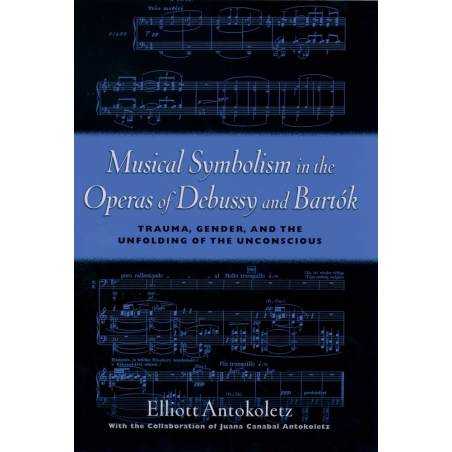This book explores the means by which the operas of Debussy and Bartok transform the structures of the traditional harmonic system into a new musical language. Antokoletz formulates new theoretic-analytic principles and describes how these principles link various historical and cultural as well as philosophical and psychological issues of the early twentieth century within the operatic milieu. The new musical language described here is based almost exclusively on interactions between folk modalities and their more abstract symmetrical transformations.
CONTENTS
Preface
Acknowledgments
1 Backgrounds and Development: The New Musical Language and its Correspondence with Psycho-Dramatic Principles of Symbolist Opera
2 The New Musical Language
3 Trauma, Gender and the Unfolding of the Unconscious in the Debussy and Bartok Operas
4 Pelleas et Melisande: Polarity of Characterisations: Human Beings as Real Life Individuals and Instruments of Fate
5 Pelleas et Melisande:Fate and the Unconscious: Transformational Function of the Dominant-ninth Chord
6 Pelleas et Melisande: Musico-Dramatic Turning Point: Intervallic Expansion as Symbol of Dramatic Tension and Change of Mood
7 Pelleas et Melisande: Melisande as Christ Symbol - Life, Death and Resurrection- and Motivic Representations of the Whole-Tone Dyad
8 Pelleas et Melisande: Circuity of Fate and Resolution of Melisande's Dissonant Pentatonic Whole-tone Conflict
9 Duke Bluebeard's Castle:Psychological Motivation
Symbolic Interaction of Diatonic, Whole-tone and Chromatic Extremes
10 Duke Bluebeard's Castle: Toward Character Reversal
Reassignment of Pentatonic and Whole-tone Spheres
11 Duke Bluebeard's Castle: The Nietzschean Condition and Polarity of Characterisations
Diatonic-chromatic Extremes
12 Duke Bluebeard's Castle: Final Transformation, Ambiguous Tonal Cycle, Retreat into Eternal Darkness
Synthesis of Pentatonic/Diatonic and Whole-tone Spheres
13 Symbolism and Expression in Other Early Twentieth-century Operas
14 Epilogue




